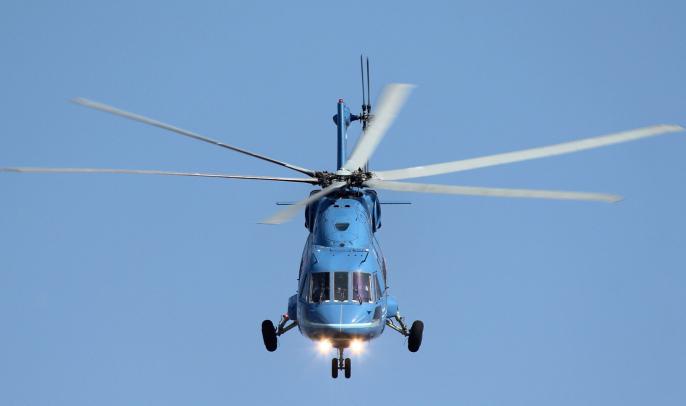Helicopters in the USSR began to be built later than in the USA, although the Russian engineer Igor Sikorsky invented this vehicle . Despite this, the lag turned out to be temporary, and Soviet helicopters soon after the start of their production showed themselves in the sky in all its glory. In many countries, they perform a variety of tasks - both military and civilian. They are convenient to maintain, flight performance is good, and the reliability of our technology has become a byword. One of the largest manufacturers of our rotorcraft is the Kazan Helicopter Plant. The site of this enterprise is part of the general information platform of the Russian Helicopters holding, which is explained by the fact that the production of this type of aircraft retained a certain centralization.
How did the aircraft production in Kazan begin? Future Kazan Helicopter Plant
Before the war, there was no aircraft factory in Kazan. In the city of Leningrad, according to the order of the People’s Commissariat of the aircraft industry of September 4, 1940, the production of aircraft was founded. The invasion of the Nazi troops posed a threat to the entire defense complex, and it was decided to evacuate part of the capacities to the rear. So the Leningrad aircraft plant at number 387 ended up in the capital of the Soviet Tatarstan, where it was combined with another production company, which had previously been engaged in the manufacture of convoy parts, having too little for the unenlightened number 169. They built small Po-2 biplanes in Kazan (they used to be called before U-2, and were intended for training pilots). These airplanes, seemingly unprepossessing and made mostly of wood, fulfilled their mission to protect their homeland: they served for reconnaissance and even carried out night bombing. Eleven thousand of them were rolled out of the factory gate onto the airfield.

After the war
The need for airplanes after the Victory decreased, but agricultural machinery was not enough: devastation. Combined S-4 combines, the first self-propelled technical devices capable of performing a number of field work, began to be produced at the operational plant No. 387. This task was more urgent than ever, there weren’t enough workers, it was necessary to increase the level of rural mechanization. And the aircraft builders managed, nine thousand units received collective farms and state farms of the USSR. But still, this plant was not created for the production of agricultural machinery.
Sky again
In 1951, the design work on the first Soviet mass helicopter Mi-1 was completed at the Design Bureau of M. L. Mil. It was a light machine, capable of lifting up to three people, including a pilot. But it was from her that the Kazan Helicopter Plant began work in the then-new aircraft industry sub-sector. In 1954, they managed to master a new machine, the Mi-4, the design of which was so successful that foreign states began to buy it. It came in handy for the needs of the Soviet Army, and Aeroflot, and polar aviation. In 1965, the production of a true masterpiece of domestic industry, the Mi-8, began, which became the most recognizable, massive and sought-after rotorcraft in the history of Soviet aircraft construction. In 1966, the veil of secrecy was removed, and the face of the faceless number of the “mailbox” took a new brand - Kazan Helicopter Plant. She became famous all over the world.
Ansat
The Soviet aviation industry has always been surrounded by the concern of the government, the best specialists, the elite of the engineering class, worked in it. After the collapse of the USSR, Kazan Helicopter Plant began to experience the same difficulties as the entire national economy. But the management of the enterprise did not give up and did not allow the ruin of the enterprise entrusted to it. The open joint-stock company created in the dashing nineties continued to engage in core activities when, as it seemed, this could only bring losses. In 1997 OJSC Kazan Helicopter Plant began assembling the first instance of Ansat - a new type of machine, light and small, which the market needed. Able to carry up to nine people, this helicopter, due to its economy, could be used in a variety of areas of life, from training pilots (Ansat-U) to flying ambulance. Two powerful engines (were used by American Pratt & Whitney) provide a speed of 250 km / h and high rate of climb. The machine is compact, its length is a little over 13 meters.

New Horizons
Ansat is still unique. In the post-Soviet period, not a single helicopter was designed in Russia except for it, but they were able to do it at Kazan Helicopter Plant OJSC. However, there were backlogs of past decades. The USSR inherited a rich inheritance, which should be disposed of reasonably. The Kazan Helicopter Plant continued to work in this direction, whose address (Tetsovskaya Street, No. 14) did not become the place of warehouse complexes, shopping and entertainment centers and supermarkets. Based on the famous Mi-8, its modification Mi-17 with modern avionics and a power plant was released. A promising development is the Mi-38, which they plan to produce from next year. For the needs of the enterprise, the latest equipment is purchased and staff is trained. As you know, it is the cadres that decide a lot.